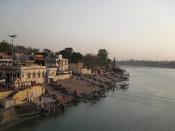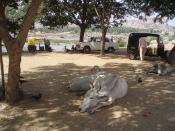India has had a sharp increase in the estimated number of HIV infections, from a few thousand in the early 1990s to around 5.1 million children and adults living with HIV/AIDS in 2003. With a population of over one billion, the HIV epidemics in India will have a major impact on the overall spread of HIV in Asia and the Pacific and indeed worldwide. India's epidemic is made up of a number of epidemics, and in some places they occur within the same state. The epidemics differ, from states with mainly gay sex transmission of HIV, to some states where injecting drug use is the main route of HIV transmission.
It's easy to underestimate the challenge of HIV/AIDS in India. India has a large population and population density, low literacy levels and very low levels of awareness, and HIV/AIDS is one of the most challenging public health problems ever faced by the country.
"The first case of HIV infection in India was diagnosed among commercial sex workers in Chennai, Tamil Nadu, in 1986. Soon after, a number of screening centers were established throughout the country. Initially the focus was on screening foreigners, especially foreign students. Gradually, the focus moved on to screening blood banks. By early 1987, efforts were made up to set up a national network of HIV screening centers in major urban areas."
A National AIDS Control Program was launched in 1987 with the program activities covering surveillance, screening blood and blood products, and health education. In 1992 the National AIDS Control Organization (NACO) was established. NACO carries out India's National AIDS Program, which helps with the formulation of policy, prevention and control programs.
The same year that NACO was established, the Government launched a Strategic Plan for HIV/AIDS prevention under the National AIDS Control Project. The Project...


